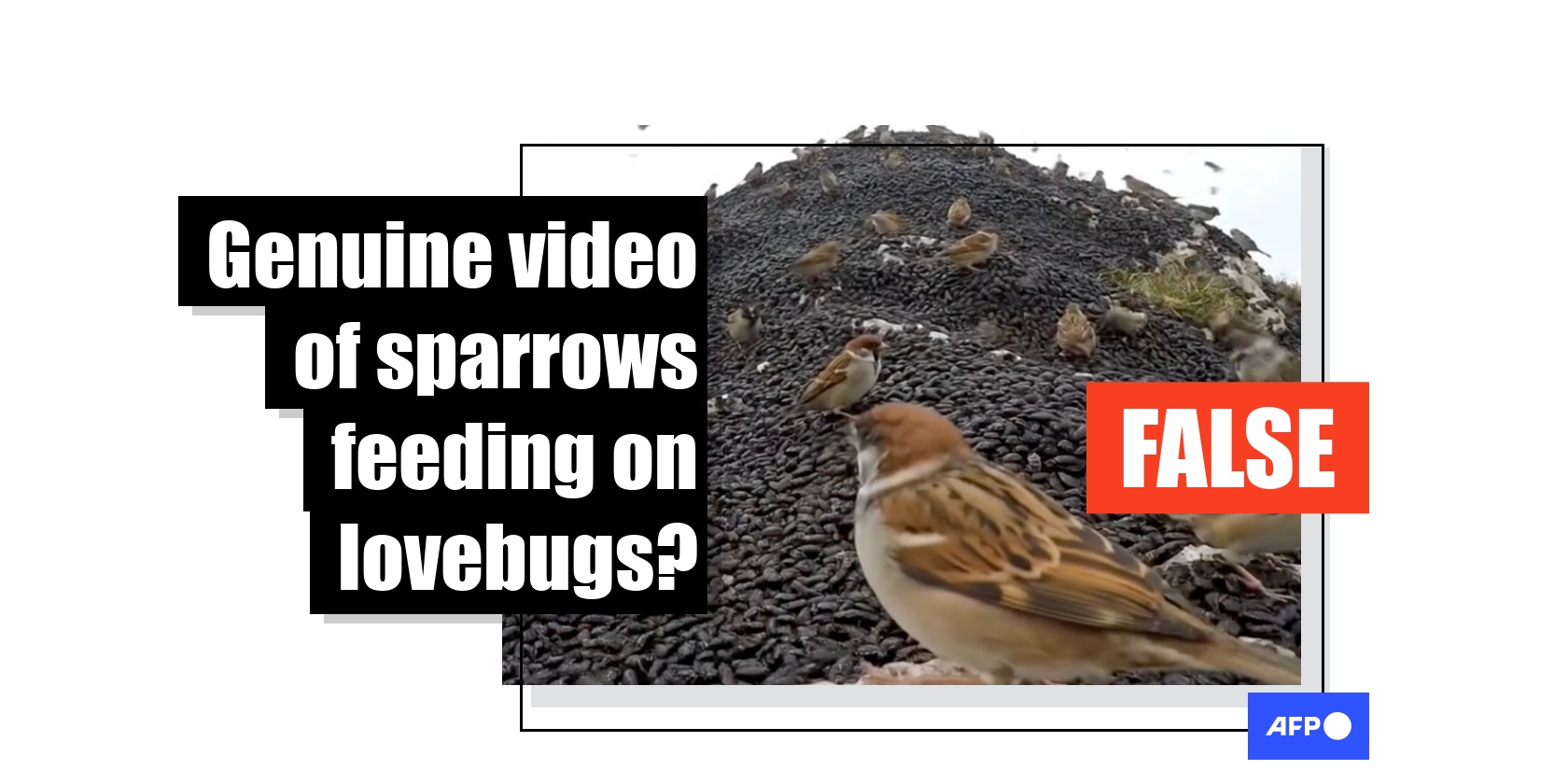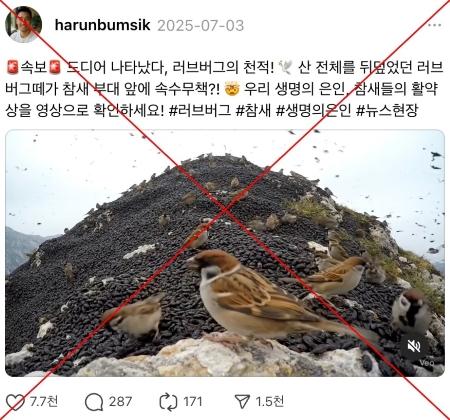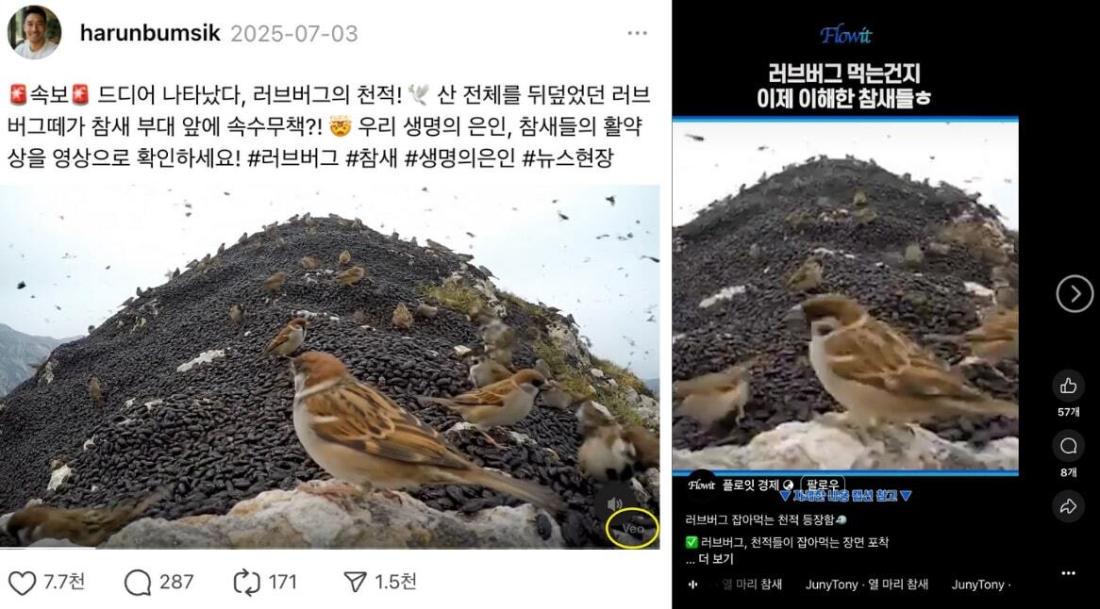
AI-generated clip of 'sparrows eating lovebugs' fools S. Korean users
- Published on July 30, 2025 at 05:18
- Updated on July 30, 2025 at 05:19
- 3 min read
- By Hailey JO, AFP South Korea
"Breaking news. A predator of lovebugs has finally appeared! The lovebugs blanketing the entire mountain are defenceless before this army of sparrows?! Watch the video to see these sparrows, true lifesavers in action!" reads a Korean-language post shared on Threads on July 3.
The eight-second video appears to show a mountain covered in black-coloured insects and a swarm of sparrows preying on them.

The claim surfaced online when the Asian nation was grappling with a lovebug invasion between late June and July, which experts say highlights worsening climate change (archived link).
First identified in South Korea a decade ago, Seoul and nearby cities are now annually hit by a weeks-long infestation of the Plecia nearctica insect, a type of March fly nicknamed "lovebug" for their distinctive mating behaviour, which sees them fly around in coupled pairs.
Complaints about the bugs, which scientists believe came from southern China and have surged with rising temperatures linked to climate change, have risen sharply, Seoul city data showed.
Videos of huge clouds of lovebugs blanketing mountain trails drew international media attention earlier this month, as they leave behind rotting black remains and a foul stench after dying (archived link).
The clip was shared alongside similar claims elsewhere on Threads, X, Instagram and Facebook.
"Never thought I'd see the day I'm rooting for sparrows," one responded, while another misled user said, "Nature's self-control ability is remarkable".
South Korean news outlets including SBS and YTN featured the clip in reports suggesting that predators of lovebugs might be emerging, but have since deleted them.
AI-generated
The video has a clear "Veo" watermark in the bottom right corner, although it has been cropped out in some posts.
The name refers to Google's new AI-powered video creation tool, which allows users to generate realistic-looking footage currently limited to eight seconds long -- the same as the clip shared in false posts (archived link).

A close inspection of the video also reveals telltale signs of AI generation, including a bird that appears to emerge from the ground before disappearing in a few seconds.
Another bird pops up out of thin air around the two-second mark.

Although generative AI technology is improving rapidly, identifying visual inconsistencies remains the best way to distinguish fabricated content from genuine materials.
Park Hyeon-cheol, a professor at Pusan National University's Department of Life Science and Environmental Biochemistry, said sparrows cannot be considered major predators of lovebugs (archived link).
"Sparrows primarily feed on grains and only eat insects temporarily during their breeding season," he told AFP on July 28, adding there aren't enough sparrows in big cities like Seoul to keep the insects in check.
"Lovebug infestations mostly affect the capital region, but sparrows are scarce there," Park said, noting the bugs naturally die off in about 10 days.
"Given the short breeding season and the limited number of sparrows, how much can they really feed before the lovebugs die?"
AFP has fact-checked other misinformation about lovebugs in South Korea.
Copyright © AFP 2017-2025. Any commercial use of this content requires a subscription. Click here to find out more.
Is there content that you would like AFP to fact-check? Get in touch.
Contact us




